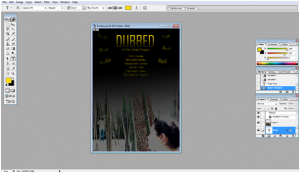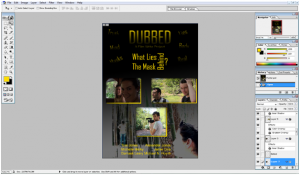What We Envisioned
Monochrome Cowboy initially looked at making a short film of 15-20 minutes in length. The initial concept was that subtitles on screen reveal a person’s true thoughts as our character’s mental state will slowly decline into a downwards spiral. The original vision was that we would have a male protagonist that is left in a state of disarray, as he waits for the return of his girlfriend after they had a fight in their home. After that ‘Jack’ heads to his local cinema and watches a foreign film. After sleeping thought most of it, ‘Jack’ wakes up with the ability to see people’s true feeling though subtitles. The conflict at the beginning served as a basis for all his insecurities as his mental state could only worsen from that point on. The narrative would eventually develop into an emotional climax where the girlfriend would return home and with his ability to see through the lies he would ask if she loved him and she replies “yes”.
What We Ended Up With
The end product was quite different than what we set out to do. Many factors contributed to this from actor availability to location scouting as instead we completed a short scene of the initial fight and a dream sequence. Being ambitious, we set out to complete a short film but we quickly came to realise that time was not on our side; therefore we opted to compete a well shot scene as a proof of concept. The character of ‘Jack’ has been gender swapped which was a positive change since many films have an insecure male as the lead. This change was due to actor unavailability and time constraints so Michelle, one of the group members of Monochrome Cowboy volunteered to play the role. There was a last minute notice that the location we were going to film at was no longer available so we had to improvise and ended up going to the gardens. The location went from being set in the bedroom of the unhappy couple to the scenic Botanical Gardens. It was a blessing in disguise as our frustrations wittered away at some of the sights the garden has to offer. We had always intended to include a dream sequence scene but it didn’t quite fit in the overall narrative but being a proof of concept and having the Botanical Gardens at our disposal we shot one. Since we all had to do our own cuts we were pleased at how different the scene turned out.






